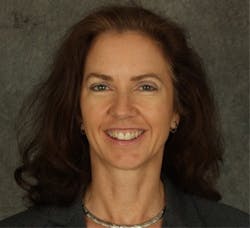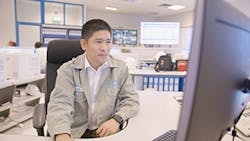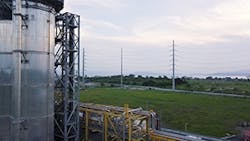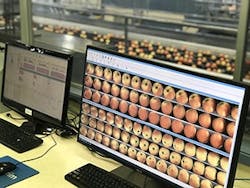At your service: What expanding services offerings looks like for four industry-focused organizations
Business models in manufacturing are in flux. Product companies are developing new service offerings at such a rate that some have become predominantly service companies. The value derived from outcomes-oriented services has customers wanting more, so the trend is strongly positioned for growth.
Tipping the scale from “manufacturer” to “service provider” is a phenomenon referred to as servitization. Moving beyond primarily making and replacing products, companies are adding revenue streams through services such as monitoring, maintenance, and training to help improve customer outcomes, which in turn can boost customer satisfaction and retention. This evolution is enabled by increasing digitalization from process and technology advancements such as the cloud, the industrial internet of things (IIoT), Big Data, modern software and analytics, remote connectivity, and much more.
Four case studies illustrate how servitization is taking root for providers of advanced positioning technology (Trimble), power plant operations (Siemens), compressed air technology (Ingersoll Rand), and fruit-sorting equipment (Compac).
First, let’s see what some who study the industry say about why and how this phenomenon is occurring.
The analysts' take
“Compared to the time when cars had carburetors and no computers, few people repair their autos anymore – me included,” observes Ralph Rio, vice president at ARC Advisory Group. “As products become more complex, they become increasingly impractical for a general-purpose maintenance team at the end customer’s site to support and maintain. This usually becomes apparent when a repair is needed and it requires product training.”
The challenge with training an on-site technician is that the knowledge may decay or the technician may leave for another role before the skill is needed, Rio notes. As a result, users look to the supplier for support, and services have become an inseparable component of the product.
Sheila Kennedy, CMRP, is a professional freelance writer specializing in industrial and technical topics. She established Additive Communications in 2003 to serve software, technology, and service providers in industries such as manufacturing and utilities, and became a contributing editor and Technology Toolbox columnist for Plant Services in 2004. Prior to Additive Communications, she had 11 years of experience implementing industrial information systems. Kennedy earned her B.S. at Purdue University and her MBA at the University of Phoenix. She can be reached at [email protected].
“In most cases, this started with and focused on maintenance and equipment uptime,” says Rio. “Some companies have extended servitization into operational performance to guide and improve the skills of the equipment operator.”
Vele Galovski, vice president of field services research at the Technology Services Industry Association (TSIA), describes the trend in blunt terms: The old make-sell-ship model of CapEx is dying. Companies used to refresh their product every few years and expect customers to refresh their capital, Galovski says. Now, product revenues are on a negative trajectory and services are on the rise.
“It is the customers pulling the service models,” says Galovski. “Most equipment manufacturers go in kicking and screaming. It’s hard to get off of a product focus because with no upfront CapEx, the cash flow changes dramatically.”
TSIA sees four distinct supplier models:
- Product engine model: 75%–80% product revenue plus some traditional implementation services, break/fix maintenance, and support
- Service engine model: Product revenue dips below 50%; service is more than 50%; product implementations are more complex; and there are more professional and managed services
- X as a Service model: 70%-plus service revenue focused on driving customer outcomes such as equipment or business optimization as enabled by the vendor’s vertical expertise
- Outcome offers model: 100% service revenue paid when outcomes are delivered – as with, for example, selling compressed air instead of cylinders of compressed air
Change doesn’t come quickly. “It takes a lot of steps to shift from a product company to outcome-based offers,” Galovski says. “First and foremost, the customers and suppliers must trust and respect one another, because the data collected and stored in the cloud is more valuable than the equipment itself.”
The following industrial product providers are already on the journey.
Improving prospects for positioning
Trimble, a California-based advanced positioning technology provider, has begun monetizing the IoT by transforming its business model while still growing the business. Galovski’s research revealed that in 2013, about 75% of Trimble’s revenue came from selling hardware and 25% was from services. Over the next four years, the company saw tremendous growth in its service and subscription revenue. By the end of 2017, its product revenue dropped to 66%; services rose to 34%; and total company revenue increased by 25%.
The transition required a significant investment in software and cloud services to deliver improved customer outcomes, including $2.5 billion spent on M&A over seven years. With its investments, Trimble established a common platform for positioning and sensing, analytics, modeling, and software as a service (SaaS). “The new offers have resulted in different but larger, more-profitable revenue streams for the company,” says Galovski.
Empowering power generation
The San Gabriel combined cycle power plant in the Philippines, owned by First NatGas Power Corp. and constructed and operated by Siemens, is the pilot site for a new, joint service offering from Siemens and Bentley Systems.
Asset Performance Management (APM) for Power Plants merges complementary technologies and services, including Bentley’s asset performance software and Siemens’ power generation and engineering knowledge and experience, to improve operations and maintenance costs, reduce outages, and increase workforce efficiency.
Delivery options for APM for Power Plants include on-premises installation or cloud-based hosting, turn-key setup complete with Siemens asset models, and a fully managed service solution set up and run remotely by Siemens professionals. The cloud-based model used at the San Gabriel pilot began with a subset of equipment – the balance of plant (BOP) – and is now being extended to all equipment across the plant.
The cloud-based model used at the San Gabriel pilot began with a subset of equipment – the balance of plant (BOP) – and is now being extended to all equipment across the plant. Source: Siemens
“Already there is an expectation of seeing an improvement in the plant’s overall availability, reliability, and with a little more time, for overall costs to drop by eliminating unnecessary time-based maintenance,” says Mark Confer, director of digital product management at Siemens’ Power Generation Services Division.
“One of the big advantages of the Bentley-Siemens relationship is we are working toward embedding visualization tools, different kinds of asset data management, and building a 3D model, or digital twin, of the plant,” says Confer. The owner is considering having a permanent ContextCapture reality modeling system with autonomous drones to track and document the changes and conditions of the plant.
San Gabriel is one of many power plants where Siemens provides full care and control. With the promise of APM already bearing fruit, Siemens is developing plans to bring it to three more early-adopter plants: one each in the U.K., Latin America, and North America. “Our dream is to have APM so standardized that it can be quickly and easily applied at any power plant,” says Confer.
The company expects to see continued growth in servitization, particularly through outsourcing. “Instead of having to bring on employees, hardware, and systems, we’re seeing a drive to reduce the absolute cost of capital for the plant,” explains Confer. “This is a trend that digitalization really accelerates, because now we can bring the functionality without a lot of capital investment.”
Solving compressed-air complexities
Ingersoll Rand’s compression technologies business is seeing consistent growth in demand for its service agreements. Ingersoll Rand identifies itself as a service-led company, noting a mix of services revenue in its compression technologies business unit. Company-wide, CEO Michael Lamach said on the Q3 2018 earnings call that services growth continued to outpace equipment.
The company offers a number of service agreement tiers, ranging from proactive parts supply (PartsCARE) to preventive maintenance (PlannedCARE) to full risk-transfer agreements (PackageCARE) wherein the company takes on the customer’s asset or system, provides uptime guarantees, and maintains the asset for the customer.
The digital revolution has enabled the value of service offerings to be enhanced through better focus on customer outcomes and providing solutions for those outcomes, says Rolf Paeper, vice president of global product management for compression technologies and services at Ingersoll Rand.
For example, the PackageCARE service programs use remote monitoring to improve customer uptime and air system performance while improving Ingersoll Rand’s ability to service and maintain air system assets.
“Our customers benefit significantly from better sustained system performance, uptime, and asset reliability,” says Paeper. “The investment payback for us is through improved service productivity.” He adds: “In addition, customer satisfaction and retention are statistically much higher for those who have service agreements with us. This leads to long-term partnerships with our customers and a stable, recurring revenue stream that insulates our business from economic changes.”
Adoption of PackageCARE, the risk-transfer offering, varies by regional maturity, but Ingersoll Rand says it’s seeing strong growth globally. This is influenced by the industry’s accelerating departure of experienced, knowledgeable workers, leaving customers less able to efficiently service equipment themselves. PackageCARE lets customers focus on other key aspects of their business – not on their maintenance capabilities for compressed air equipment and systems, offers Paeper.
“When I travel around the world to customers, it is something that really resonates with them,” he observes. “We are able to take a customer’s problem and provide outcomes that are important to them. They are really intrigued about how the technology can help us get better at helping them to keep their equipment up and running,” Paeper adds.
For companies considering or planning a servitization transition, Paeper recommends the following:
- Think bigger than your part: Think about the systems; think about the application; think about the environment. Partner with your customers to find solutions that address their systems, not just specific assets.
- Strive to be intimate with your customers and understand their challenges and target outcomes, and which ones you can help address.
- For remote monitoring, provide your customers with total transparency and security. Explain why you’re connecting to their systems and what value you will provide by doing so.
Simplifying fruit sorting
In the fresh-fruit industry, once the fruit is picked off the tree, there’s no delaying its time to market; the packing line has to run. This challenge is lessened with the produce industry’s rapid technology transformation. Companies such as Compac, a New Zealand-based provider of post-harvest sorting equipment for the global fresh fruit industry, are digitizing and automating factories and developing new service offerings as a result.
“We are working toward embedding visualization tools, different kinds of asset data management, and building a 3D model, or digital twin, of the plant,” says Siemens’ Mark Confer of Siemens’ partnership with Bentley Systems at the San Gabriel combined cycle power plant in the Philippines. Source: Siemens
Years ago, growers had lots of eyes on the fruit, grading it by various characteristics. Grading technology improvements from Compac optimized the fruit packhouses. “Our vision-sensing equipment can look at the fruit and make detailed decisions on whether it is good or bad and its size, shape, ripeness, and sweetness,” says Darrell Smithson, vice president of global services at Compac, now part of publicly listed Tomra. “In addition, the way the fruit enters and leaves the factory and moves throughout the plant has changed quite dramatically.”
Because traditional machine operations and maintenance (O&M) experience doesn’t necessarily extend to highly sophisticated equipment, Compac has developed service packages to complement existing customer skill sets. Options range from consultative services such as condition-based maintenance (CBM) to full on-site services, or, for facilities like packhouses, full remote control of O&M using IIoT-enabled digitized systems.
“In our Compac Care Premium package, customers get training, remote monitoring, and inspections from us, and we hibernate the machine for them at the end of the season – or we take advantage of the downtime and use CBM to help them prepare for the new season,” says Smithson. “We now also measure uptime, throughput, and quality, the three elements of overall equipment effectiveness (OEE).”
Vision-sensing technologies from Compac, a New Zealand-based provider of post-harvest sorting equipment, are helping fresh-fruit providers grade fruit more efficiently in packhouses, and service offerings have been extended to include remote monitoring and condition-based maintenance. Source: Compac
Expectations for the service agreements started low. “When I started at Compac 2.5 years ago, I was told none of our customers would buy a service contract because a lot of the people are from agricultural backgrounds and are used to fixing everything themselves,” says Smithson. However, success with early adopters drove interest in the contracts, and now, in its local New Zealand market, where about half of the world’s kiwifruit is grown, about 85% of Compac customers have some kind of Compac Care service contract.
To manage its services, Compac uses the cloud-based ServiceMax platform from GE Digital. “Connectivity and a common service platform are really important to us to ensure a consistent customer experience,” explains Smithson.
The services were first introduced in areas where Compac directly supports its customers and now are rolling out to Compac’s partners. The partners work to Compac’s global standards for how to run and service these machines, and they must use ServiceMax. “We find that our partners are very sophisticated at building our systems but less at operation and CBM, so our job is to help their field service techs to deliver that,” explains Smithson.
Provider-customer relationship dynamics are evolving through servitization, too. “Now that things don’t break as frequently, we have less chance to be a hero to our customers,” says Smithson. “Instead, we’re kind of a silent partner looking for new ways of continuing the value and intimacy with our customers.”
For example, Compac is introducing web portals where customers have greater transparency into what’s going on in their installed base and can book services, see the history of visits, and live-chat with a service technician. Also, they’re starting to pull real-time data out of the machine and display it in the ServiceMax platform.
Smithson offers sage advice for those exploring servitization: You can’t just push service contracts through a sales channel. Instead, walk the customer through the journey. Work on the value proposition; establish the processes and systems; and get a few customers involved. See how it relieves some of their pain, and then relate that to OEE and uptime. Suppose the cost of downtime is $10,000/minute – have those from whom you’re seeking buy-in consider the value of cutting downtime in half next season. That opens up a bigger conversation.
Now that you see how it works, are you ready for the journey?






